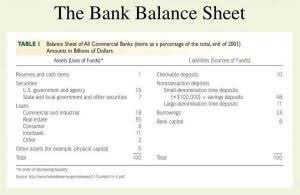Accounting Basics: T Accounts

Your profit & loss organises your revenue and expense accounts whilst your balance sheet organises your asset, liability and equity accounts. A single transaction will have impacts across all reports due to the way debits and credits work. So grasping these basics helps you delve into these reports and understand the financial story they tell.
- Account balances are always calculated at the bottom of each T-account.
- The contra account here used to describe what occurred is baking equipment.
- The ingredients for the cup of coffee are recorded as inventory (asset account).
- One account will get a debit entry, while the second will get a credit entry to record each transaction that occurs.
- T-accounts are used because they are a simple and easy way to represent these corresponding transactions in and between your accounts.
- On the left-side of the vertical line, the debit amounts are shown.
What Are T Accounts and Why Do You Need Them?
Let’s take our previous transactions relating to the bank account and see how this https://www.bookstime.com/ would be used to draw up the bank T-account. According to the Collins English Dictionary, the ledger is « the principal book in which the commercial transactions of a company are recorded. » A current asset whose ending balance should report the cost of a merchandiser’s products awaiting to be sold.
- Then, these journal entries are transferred into the general ledger, in the form of T accounts.
- On January 12, there was a credit of $300 included in the Cash ledger account.
- Now these ledgers can be used to create an unadjusted trial balance in the next step of the accounting cycle.
- Debits are always posted on the left side of the t account while credits are always posted on the right side.
- T accounts are a simple and convenient way to organize your journals for basic bookkeeping functions.
- Just like journalizing, posting entries is done throughout each accounting period.
- You need to set up every account separately and then go through them constantly to record every transaction as it comes in.
Service Revenue Earned and Collected
The inventory of a manufacturer should report the cost of its raw materials, work-in-process, and finished goods. The cost of inventory should include all costs necessary to acquire the items and to get them ready for sale. Sales are reported in the accounting period in which title to the merchandise was transferred from the seller to the buyer. If you remember from part 1 and part 2, we went through how every debit must have a matching credit and vice versa. The left-hand side is where you enter debits whilst the right-hand side is where you enter credits.

Calculating Account Balances
If he then makes a payment to one of his suppliers, he will debit his accounts payable T-account and, this time, credit his cash t accounts T-account. The major components of the balance sheet—assets, liabilities and shareholders’ equity (SE)—can be reflected in a T-account after any financial transaction occurs. As I owe both this month and last month’s rent, I have to pay £4000. My bank account is credited £4000, whilst the accounts payable account is debited £2000 and rent is debited £2000. Therefore, both debits and credits are equal in this transaction.
How much are you saving for retirement each month?

A useful practice is to update your general ledger any time you make journal entries for your accounts, or at least set time aside to do this on a regular basis. When it comes time to run your financial reports, you’ll have already checked your records for accurate and complete recordings. Create a routine around your bookkeeping tasks to stay as organized as possible.
After a few days of receiving the invoice for the rent, i.e., on April 7th, 2019, Mr. X makes the same payment. Remember that with every transaction and journal entry there will be two accounts that are affected. A temporary account used in the periodic inventory system to record the purchases of merchandise for resale. (Purchases of equipment or supplies are not recorded in the purchases account.) This account reports the gross amount of purchases https://x.com/BooksTimeInc of merchandise. Net purchases is the amount of purchases minus purchases returns, purchases allowances, and purchases discounts. The journal entry recorded in the general journal (as opposed to the sales journal, cash journal, etc.).

T-Account: Definition, Example, Recording, and Benefits

Accounts Receivable has a credit of $5,500 (from the Jan. 10 transaction). The record is placed on the credit side of the Accounts Receivable T-account across from the January 10 record. On the flip side, when you pay a bill, your cash account is credited because the balance has been reduced since you recently paid a bill. After assessing what debit and credit entry applies to each specific account, T accounts can be created. And if you’re new to the accounting world and have little knowledge in finance, T accounts can be especially useful in working through complex financial transactions. Because T accounts are posted into the General Ledger of a business, they’re also commonly recognized as ledger accounts.


